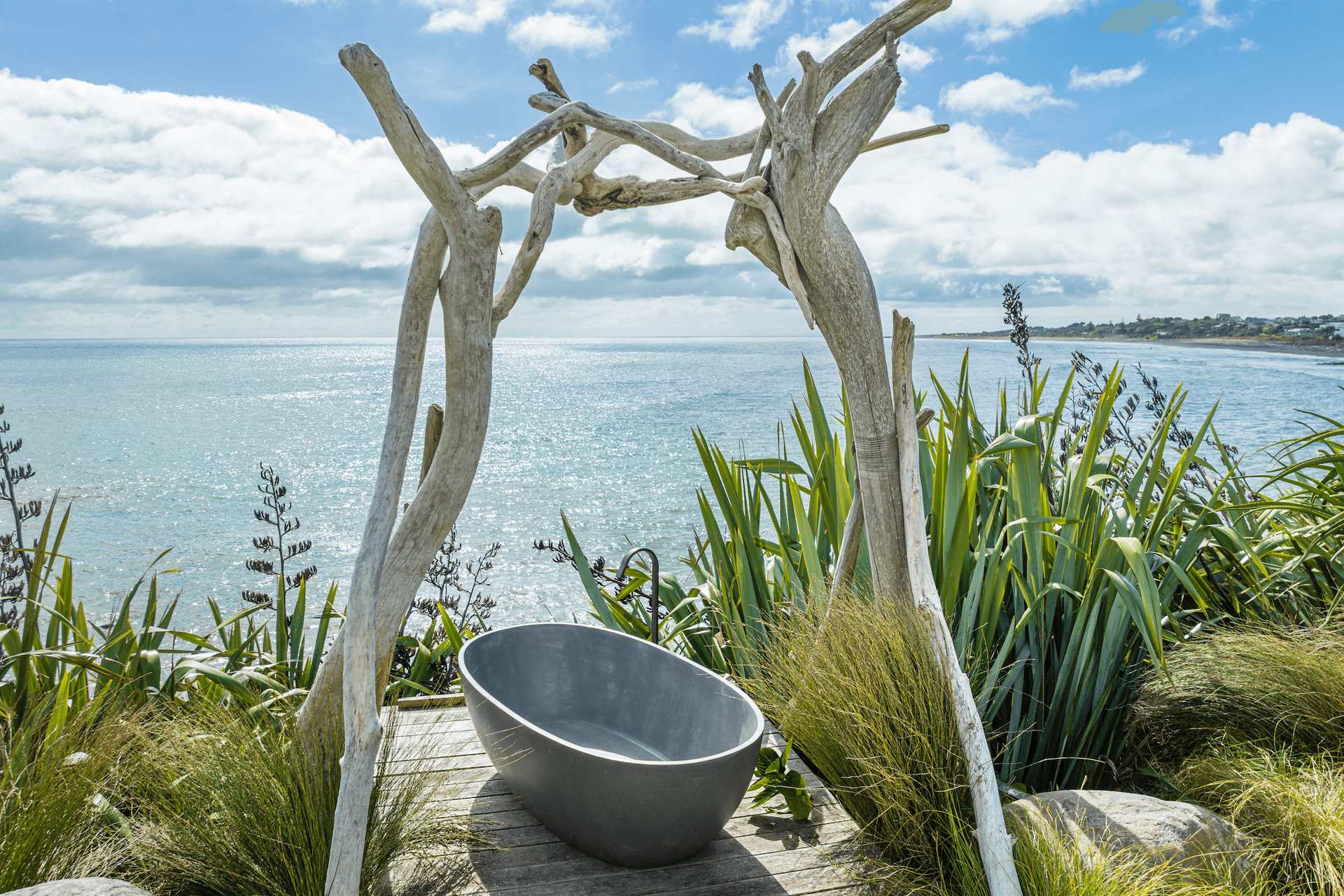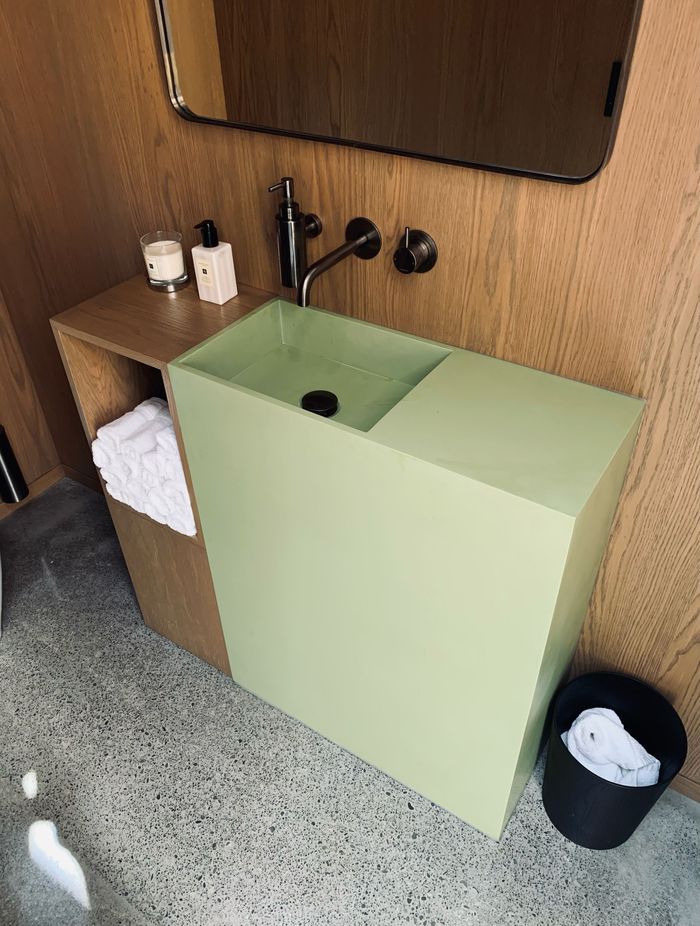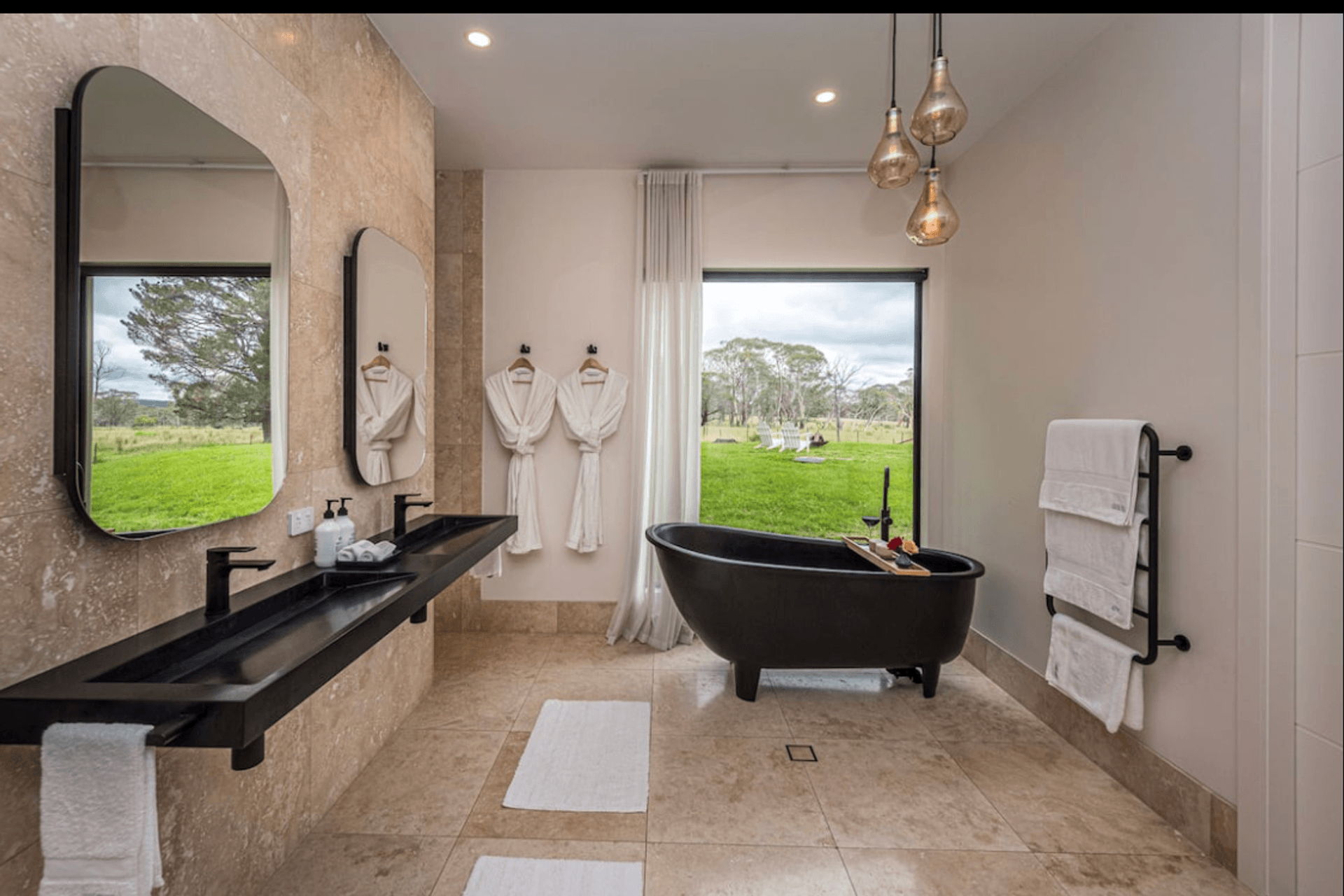The rise of luxury stone baths and basins in New Zealand
Written by
10 May 2023
•
4 min read
Embracing organic finishes and textures sourced from the earth and our surrounds is nothing new in architectural design. In fact, natural stone baths have been used as far back as ancient Roman and ancient Egyptian times.
Now in the 21st century, they are experiencing another boom in popularity with architects, interior designers and homeowners leaning into the aesthetic that stone and concrete products provide when placed in a modern bathroom.
Jim Bedwell reflects on nearly 20 years of business as Founder and Director of Stonebaths, saying the allure of using stone and stone composites in bathroom fixtures is multifaceted, but one big drawcard is their status as a more substantial option.
“A lot of people renovating or building their new bathrooms are wanting something that’s a bit more solid, that doesn’t feel like an acrylic product, that stands out as a potential ‘showpiece’ in the bathroom,” says Jim. “And while you can do this with solid stone, this comes with added challenges, like the sheer weight.”

Polymarble and solid surface
He explains that because of this, most of Stonebaths’ products are stone composites, the most popular of which are polymarble and solid surface. Though they are stone composites, the final products don’t lose that "stone feel" he says. Polymarble, especially, is a key material in the company’s range of products because of its vast, rapid improvements in technology in the last few decades.
“In addition to having the look, feel and texture of a traditional stone bath, the composition of the polymarble has improved lately to really bring the weight down while maintaining the appealing appearance,” says Jim. “So instead of having a 200kg bath, you’ve now got a 130kg bath – which makes a considerable difference to both installation logistics as well as working within building specifications.”
Polymarble also performs well as an outdoor bath because they are more resistant to UV. Solid surface stone products, on the other hand – which are higher in synthetic polymers - are more amenable to colour customisation.
“Our range is approximately half-and-half polymarble and solid surface, with a recent range being launched in concrete,” says Jim. “Each has its advantages. If you wanted a coloured product, you might go with solid surface as pigment colour is blended throughout the core, as opposed to polymarble which has a 2-3mm coloured coat.”

Since warm, earthy colour, especially in bathrooms, is a particular trend in New Zealand right now, the combination of this customisation with the look and feel of stone composite fixtures is especially appealing. But what other trends are we seeing in the market?
“Right at this moment, I’m seeing a movement towards thin-rimmed baths,” he says. “About five years ago it was the opposite – it was a big thing to make big chunky baths with large rims, which could go up to 100mm. For context, standard rims are about 25mm.
“Now we’ve got a range of baths coming in that are really elegant, and their rims are about 15mm – and I think this gives off a totally different look, a ‘fineness’ you could say. It’s very European, very understated, and definitely becoming more popular.”
Jim also pinpoints the concrete bath trend as being one that is likely to stay around for the foreseeable future, particularly with outdoor baths being in favour with many new builds.

Baths, basins and more
While baths are the natural showpieces at Stonebaths, it’s not all the company is known for. Stone basins are also a top seller – and Jim says they aren’t immune to shifting trends and tastes in the market either.
“Ramp basins are a real trend now,” he says. “Traditionally you see them more in commercial bathrooms, where that more ‘industrial look’ is more common. But this industrial feel is becoming a trend in residential spaces now, especially in large bathrooms in high-end residential projects.
“That trend has grown in recent years and it’s still very strong – we often get architects and interior designers specifying them for residential projects.”
And while stone baths and basins exist in many people’s minds as more of a luxury item, Jim says compared to higher-end porcelain or acrylic products, they’re quite similar in value.
“The prices have stabilised, and in a lot of cases, the difference is narrowing,” he says. “So it’s a great time to consider bringing in a stone composite bathroom fixture to either create a stunning showpiece or to level up the aesthetic of a bathroom.”
Learn more about Stonebaths and its stone composite products.